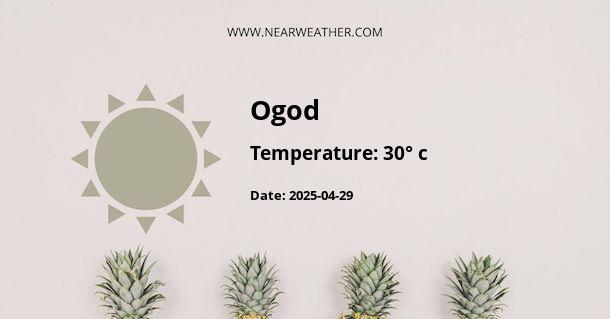Climate and Weather in the Philippines
The Philippines is a tropical country located in Southeast Asia, consisting of more than 7,000 islands. It is known for its diverse and unique climate, with distinct wet and dry seasons throughout the year. The country's location near the equator and its exposure to various weather systems make its climate interesting and dynamic.
Overall Climate
The Philippines experiences a tropical climate characterized by high temperatures and humidity year-round. The country is located within the Pacific Ring of Fire, which means it is prone to earthquakes and volcanic activity. The archipelago is also situated in the typhoon belt, making it susceptible to tropical cyclones.
The country has two main seasons: the wet season and the dry season. The wet season, also known as the monsoon season, typically lasts from May to October, while the dry season extends from November to April. However, it is important to note that the climate can vary across different regions of the Philippines.
Wet Season (May to October)
The wet season in the Philippines is characterized by frequent rainfall, high humidity, and the possibility of tropical cyclones. During this period, the southwest monsoon, locally known as "habagat," brings moist air from the Indian Ocean, resulting in heavy rains and thunderstorms. The wet season is also marked by an increase in cloud cover and cooler temperatures compared to the dry season.
Regions in the western part of the country, such as Palawan and Western Visayas, generally experience higher rainfall amounts during the wet season. These areas are more likely to be affected by tropical cyclones and experience strong winds and heavy downpours. On the other hand, regions in the eastern part of the country, including the Bicol Region and Eastern Visayas, typically receive less rainfall during this period.
It is worth mentioning that the Philippines is one of the most typhoon-prone countries in the world. On average, the country experiences around 20 typhoons per year, with the majority occurring during the wet season. These typhoons can cause significant damage to infrastructure, agriculture, and even loss of life. It is essential for residents and visitors to stay updated with weather forecasts and follow safety guidelines during these times.
Dry Season (November to April)
The dry season in the Philippines is characterized by less rainfall and lower humidity compared to the wet season. During this period, the northeast monsoon, locally known as "amihan," brings cooler and drier air from the Asian mainland. The dry season is generally considered the best time to visit the Philippines, as it offers more stable and favorable weather conditions for outdoor activities.
Most regions in the country experience decreased rainfall during the dry season, with some areas in the eastern part of the country, such as Bicol and Eastern Visayas, still receiving occasional showers. In contrast, regions in the western part, including Palawan and Western Visayas, tend to have less rainfall and more sunny days during this period.
The dry season is also the peak tourist season in the Philippines, as many visitors are attracted to the country's beautiful beaches, diving spots, and other outdoor attractions. It is important to note that popular tourist destinations, such as Boracay and Palawan, can be crowded during this time, so it is advisable to plan and book accommodations in advance.
Regional Climate Variations
Due to its geographical location and topography, the Philippines exhibits regional variations in climate. The country is divided into three main geographical areas: Luzon, Visayas, and Mindanao.
In Luzon, the largest island in the Philippines, the climate varies from tropical rainforest in the northern part to a more pronounced dry season in the central and southern regions. The northernmost provinces, such as Batanes and Benguet, experience cool and relatively dry weather throughout the year. The central and southern areas, including Metro Manila and Bicol, have distinct wet and dry seasons.
In the Visayas region, which includes popular tourist destinations like Cebu and Bohol, the climate is generally characterized by a more pronounced wet and dry season. The eastern part of the region tends to receive more rainfall compared to the western part.
In Mindanao, the southernmost island group of the Philippines, the climate is influenced by its proximity to the Pacific Ocean and the presence of mountain ranges. The region experiences a more even distribution of rainfall throughout the year, with no distinct dry season. Areas in the eastern part of Mindanao, such as Davao and Surigao, receive more rainfall compared to the western areas like Zamboanga.
Conclusion
The Philippines has a diverse and unique climate characterized by a tropical climate, distinct wet and dry seasons, and regional variations. The country's location near the equator and exposure to various weather systems make it prone to tropical cyclones and typhoons. It is important for residents and visitors to stay informed about weather forecasts and follow safety guidelines, especially during the wet season. The dry season offers more stable and favorable weather conditions, making it the peak tourist season. Whether you are planning to visit the Philippines for its beautiful beaches or explore its cultural heritage, understanding the climate and weather patterns will help you make the most of your experience.
A - Ogod's Latitude is 12.900900 & Longitude is 123.616997.
A - Weather in Ogod is 30° today.
A - Climate Conditions in Ogod shows overcast clouds today.
A - Humidity in Ogod is 71% today.
A - Wind speed in Ogod is 23.47 km/h, flowing at 55° wind direction. today.
